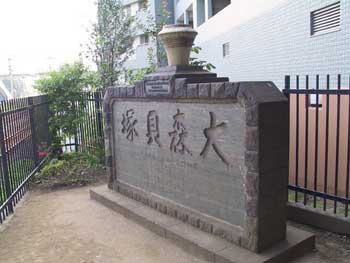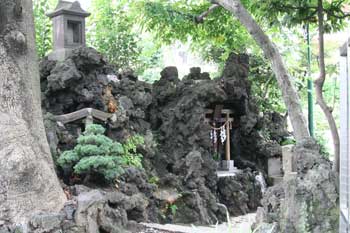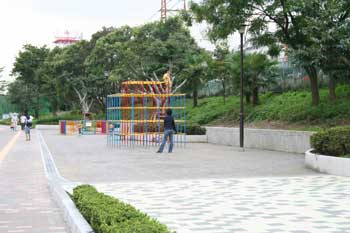|
Why Not Visit One Hundred Scenes of Shinagawa? Part 14
– Oi Area –
Explore the history of Shinagawa with a visit to Omori Shell Mound, which was excavated by Dr. Morse, and Oi no Suijin.
|
Kashima-jinja Shrine
(6-18-36 Oi)
This shrine is known to the community as the protective guardian of Oi-mura Town. The “tabunoki” camphor trees and “akagashi” Japanese evergreen oak on the shrine grounds are magnificent.
|
|
Omori Shell Mound
(6-21 Oi)
This mound is an archeological dig from the Jomon era. It was the first scholarly excavation and involved the first research activities conducted in Japan by Dr. Edward S. Morse in 1877. For this reason, Omori Shell Mound is called “the mecca of Japanese archeology” and is a nationally designated historical remnant. The area is maintained as Omori Shell Mound Monumental Garden and contains a monument and a statue of Dr. Morse.
|

|
|
Oi no Suijin
(5-14-9 Minami-Oi)
Since it once had a fresh water spring by the large willow trees, this area was known from the Edo period as “Yanagi-no-Shimizu (Fresh Water of the Willows).” A small shrine was built here in 1685 in honor of the water god. It is said that the people of Oi-mura Town continued up to the Meiji period to hold events to pray for rain when there was a water shortage. Although the water spring is now dry, the area has been designated a historical remnant in the city.
|

|
Oi-Suijin Park
(5-16 and 6-14 Minami-Oi)
This is a long, narrow park that stretches about 800 meters along the rail track. The park has a fountain, etc. and is divided into three areas by the roads running through the park. Except for a certain section, the park is structured so that it is harmonized with the sidewalks, making the area ideal for those who enjoy taking a leisurely stroll.
|

|
|



